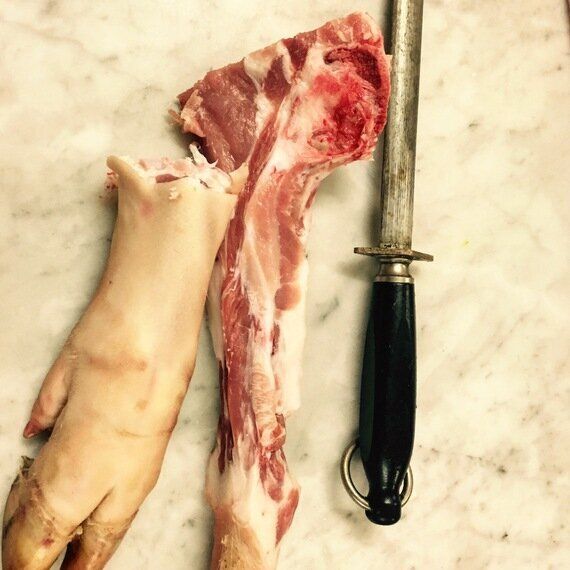
Image: Author's own
The environment secretary, Michael Gove, has announced that CCTV will now be compulsory in all slaughterhouses in England. This is fantastic news for animal welfare campaigners and can only be a positive step in ensuring that we remain at the top of the list when it comes to animal welfare standards worldwide.
Unfortunately it has become apparent to me that the bigger the operation, the more likely animal abuse is to take place. In a small, family run slaughterhouse where minimal numbers of animals are being dispatched each day, it is much easier to keep an eye on operations and retain good practices. Each animal that is brought in will belong to Farmer X, or Farmer Y, with whom the abattoir owners have a relationship. Small-scale farmers with a love and respect for their animals will want to ensure that this good treatment continues right up until the end. Small-scale abattoirs will be aware of this, along with the knowledge that the farmer's livelihood heavily depends on these animals.
When it comes to a large abattoir, it's possible to comprehend how people cease to see these animals as living beings, and start treating them as mere objects for our consumable end products. They're churning through animals at a vast rate and pace, and the option to see them as living beings disappears. This is no justification for the mistreatment of animals, but it goes some way to understanding how it could occur.
The Danish Crown Slaughterhouse is one of the biggest in the world where around 100,000 pigs are dispatched every single week. 92% of the pork that is slaughtered here is exported - and the majority of that is to the UK. That's 250,000 tonnes of meat a year being exported. If you buy your bacon in the supermarket, there is a very high chance that it's Danish pork.
Although this slaughterhouse prides itself on it's modern development to try to ensure minimal stress, the astronomical scale of this place is enough to make me wince. The lairage area (where the animals are kept before being dispatched) can hold 3,800 pigs. Although I have no doubt that there are high standards being upheld here (they have over 100 visitors a day, who come to watch the process from a viewing gallery), my main concern is where on earth all these animals have come from in the first place. What kind of conditions have they been kept in up to this point? What have they been fed on? Have they even seen any natural light? It's all very well for them to have 'calm, humane conditions' in the slaughterhouse, but if they haven't lived a happy life outdoors, I don't want to eat them.

Image: Author's own
These pigs are likely to have come from factory farms, where due to overcrowding and a lack of natural light and resources the pigs become stressed and prone to disease. They are therefore given a great deal of antibiotics to combat this, which we in turn ingest. This is an unsustainable and unethical system, which relies on drugs to solve a problem that needn't exist. If the pigs were not spending their lives in cramped, unnatural and unhealthy conditions, they would not be biting at each other out of stress and the high use of antibiotics would not be necessary. The World Health Organisation has already warned that these antibiotics can have a negative impact on our immune systems.
So although I believe this new legislation is highly laudable and will give new protection to animals, it doesn't stop huge quantities of meat coming into the UK from places where welfare standards, in both the farms and the slaughterhouses, are not anywhere near as high as ours.
For regular updates follow @piglet2plate on Instagram
